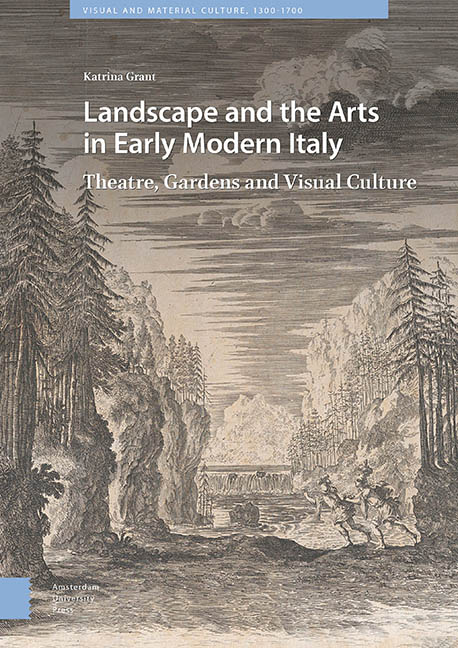Book contents
- Frontmatter
- Contents
- Acknowledgements
- Introduction
- 1 Theatricality, a View from the Landscape
- 2 Gardens of the Gods : Classical Revival, Intermedi, Early Opera and the Idea of Nature
- 3 The (Singing) Figure in the Landscape
- 4 Triumph over Nature : Machines and Meraviglia on the Seventeenthcentury Stage
- 5 The Theatre in the Landscape : Pliny to Pratolino
- 6 The Garden as Stage, the Visitor as Performer
- 7 Stages without Actors : Theatres of Sculpture, Water and Flowers
- 8 Performing in the Parrhasian Grove : Green Theatres and the Academies
- Bibliography
- Index
6 - The Garden as Stage, the Visitor as Performer
Published online by Cambridge University Press: 15 September 2022
- Frontmatter
- Contents
- Acknowledgements
- Introduction
- 1 Theatricality, a View from the Landscape
- 2 Gardens of the Gods : Classical Revival, Intermedi, Early Opera and the Idea of Nature
- 3 The (Singing) Figure in the Landscape
- 4 Triumph over Nature : Machines and Meraviglia on the Seventeenthcentury Stage
- 5 The Theatre in the Landscape : Pliny to Pratolino
- 6 The Garden as Stage, the Visitor as Performer
- 7 Stages without Actors : Theatres of Sculpture, Water and Flowers
- 8 Performing in the Parrhasian Grove : Green Theatres and the Academies
- Bibliography
- Index
Summary
Abstract
This chapter explores the rise of the idea of the garden as a stage, looking at the emergence of the theatre as a key feature of garden design in this period. It looks at the printed views published by Giambattista Falda and Marcantonio Dal Re as examples of the seventeenth-century ‘scenographic gaze’. It also examines the way that descriptive accounts of the experience of gardens began to foreground theatrical terms like stage, performer and spectator. It links these representations and accounts to broader shifts in seventeenth century culture toward framing human activity in terms of performativity and spectacle.
Keywords: Giambattista Falda, Marcantonio Dal Re, Prints, Vedute, Travel accounts, Theatrum Mundi
In July 1637 a crowd assembled on the stone steps of a newly completed amphitheatre in the Boboli gardens in Florence. The amphitheatre was a seventeenth-century addition to the sixteenth-century garden. It is situated directly behind the Palazzo Pitti, along a central axis that led from the large, rusticated entranceway through the Ammannati courtyard, through the amphitheatre, and up the hill behind. The courtyard had already begun to be used as a site for performances such as equestrian ballets and parades of floats which had previously been held in the more public setting of the Piazza della Croce. Temporary wooden seating had been set up around the lower part of the garden directly behind the courtyard, the Prato Grande, in 1618, and by 1637 was replaced by a stone amphitheatre designed by Giulio Parigi and completed by his son Alfonso.
The assembled spectators were there to watch a magnificent equestrian ballet staged as part of the wedding celebrations for Ferdinando II de’Medici and Vittoria della Rovere. This ballet had a binding narrative about the wonders and enchantments of nature and their seductive effects taken from Torquato Tasso's Jerusalem Delivered. The text was put together by Ferdinando Saracinelli and it followed the story of Armida, the Saracen sorceress sent to stop the Christian knights and murder the hero Rinaldo, who instead falls in love with her target and creates a beautiful garden in which to hold him hostage. The narrative celebrated ideals of chaste love and suitable marriage alliances, but it also used performance to invoke the idea of the garden as an enchanted realm.
- Type
- Chapter
- Information
- Landscape and the Arts in Early Modern ItalyTheatre, Gardens and Visual Culture, pp. 175 - 200Publisher: Amsterdam University PressPrint publication year: 2022



